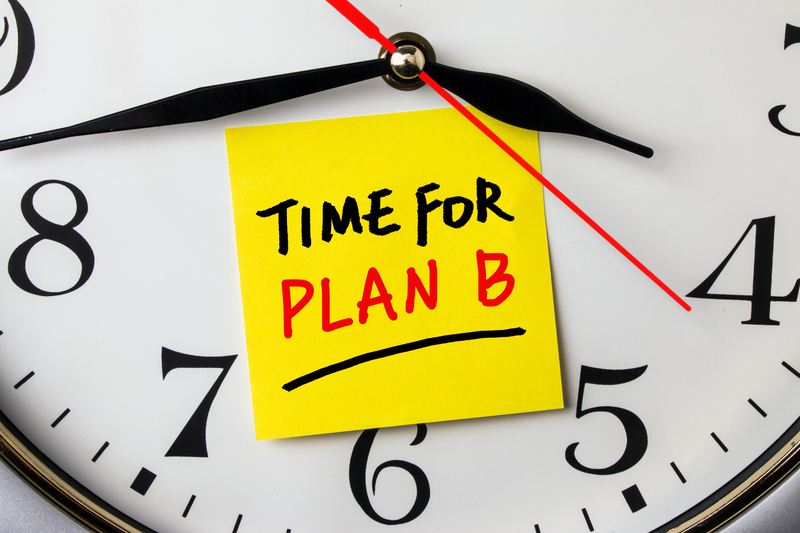Efficient Strategies for Packing When Moving House
Posted on 21/05/2025
Efficient Strategies for Packing When Moving House
Moving house is a significant event in anyone's life, often bringing both excitement and stress. Whether you're upgrading to a larger space or relocating to a new city, one of the biggest logistical challenges is ensuring your belongings are packed efficiently and securely. Implementing efficient packing strategies can make the entire moving process smoother, faster, and less overwhelming.
Why Packing Efficiently Matters
Packing for a move can seem like a straightforward task, but taking a strategic approach can save you both time and money. Not only does optimal packing reduce the risk of damage, but it also helps you settle into your new home with less hassle. Here are several benefits of using efficient moving house packing strategies:
- Cost savings: Fewer boxes and less packing material mean lower moving expenses.
- Time management: Streamlined packing means less time spent boxing up and unpacking.
- Reduced stress: Knowing belongings are safe and organized soothes moving anxiety.
- Minimized risk: Properly protected items are less likely to break or get lost.

1. Start Early and Make a Plan
One of the most efficient strategies for packing when moving house is to begin as early as possible. Giving yourself ample time allows you to proceed methodically instead of rushing when the moving date approaches.
Set a Packing Timeline
Break your packing into phases. Determine what you can pack early (seasonal items, decor, little-used appliances), and what must stay accessible until the last minute (toiletries, daily clothing, kitchen essentials).
- 8 weeks out: Start decluttering and packing non-essential items.
- 4-6 weeks out: Pack guest rooms, out-of-season clothing, rarely used dishes.
- 2 weeks out: Pack most kitchenware, books, linens.
- Final week: Box up everyday items and prepare an essentials kit.
Create a Room-by-Room Checklist
A detailed checklist ensures you don't overlook anything important. Tackle one room at a time and mark your progress as you go.
2. Declutter Before You Pack
Before putting anything into boxes, take the opportunity to declutter your belongings. Moving is the perfect time to assess what you truly need in your next home.
- Sort: Separate your items into categories: keep, donate, sell, or discard.
- Host a garage sale: Not only do you lighten your load, but you can earn some extra cash.
- Donate responsibly: Many local organizations will gladly accept gently used items.
- Dispose safely: Be sure to recycle or dispose of hazardous materials correctly.
3. Gather High-Quality Packing Materials
Using the right supplies is crucial for an efficient house-moving packing strategy. Invest in sturdy materials to save yourself from headaches down the road.
- Variety of box sizes: Small for heavy items (books, tools), large for light items (bedding, clothing).
- Bubble wrap and packing paper: For fragile items such as glassware, artworks, and electronics.
- Strong packing tape and dispensers: Secures boxes tightly to prevent breakage and spillage.
- Labels and markers: Clear labeling saves time when unpacking and helps movers handle with care.
- Specialty boxes: Wardrobe boxes for hanging clothes, dish packs for kitchenware.
Pro Tip: Use What You Have
Reduce waste and save money by using suitcases, laundry baskets, and storage bins as moving containers. Wrap fragile items in towels or blankets to double as cushioning.
4. Pack Systematically and Stay Organized
Label Everything Clearly
Use bold, descriptive labels for each box, specifying both the contents and the destination room. Consider color-coding labels by room (red for kitchen, blue for bedrooms, etc.) for even more efficiency.
- Include special notes like "FRAGILE," "OPEN FIRST," or "HEAVY."
Number Your Boxes
Keep a master inventory list where you record each box's number along with its main contents. This helps you keep track and makes unpacking systematic.
Pack Room by Room
Focusing on one room at a time prevents mixing items from multiple areas and makes your move-in experience orderly.
5. Protect Items with Professional Techniques
Use the Right Packing Methods
- Wrap fragile items individually in bubble wrap or packing paper and use plenty of cushioning in the box.
- Fill empty spaces in each box with crumpled paper or clothing to prevent shifting.
- Reinforce the bottoms of boxes with extra tape to hold heavier items.
- Don't overpack boxes--heavy boxes are harder to move and more likely to break open.
Pack Dishes Vertically
Stack plates and bowls vertically (like records), not flat, to lessen the chance of breakage. Place a cushion of packing paper at the bottom and top of the box.
Wrap Cables and Electronics Smartly
- Coil and label each cable.
- Photograph electronics connections before disassembling to simplify reassembly in your new home.
- Pack electronics in their original boxes if possible, or use heavy-duty boxes with plenty of padding.
Seal Liquids and Toiletries
Bag up all liquids, lotions, and cleaning supplies in sealable zip bags, then place upright in a plastic container in case of leaks.
6. Packing for a Smooth Unpacking
Create a "First Night" Essentials Box
- Include basic toiletries, towels, toilet paper, medications.
- Pajamas, 1-2 outfits, and chargers for devices.
- Simple cookware, snacks, coffee or tea supplies.
- Pet food and supplies if applicable.
Mark this box "OPEN FIRST" and make sure it's last on the moving truck or travels with you.
Pack an Important Papers Folder
- Passports, contracts, banking information.
- Birth certificates, insurance documents, medical records.
- Keep this with you at all times, not in the moving truck.
7. Maximize Space and Minimize Damage
Make the most of every box by packing efficiently, but without compromising the safety of your belongings.
- Disassemble furniture where possible. Keep screws and hardware in labeled plastic bags taped to the relevant item.
- Pack clothes in suitcases and use vacuum bags for bulky bedding.
- Fill dresser drawers with light, soft items--don't overload.
- Stack boxes by weight: heavy on bottom, light on top in both your moving van and storage areas.
Think Inside the Box
- Group similar items--kitchen gadgets together, books with books, shoes with shoes--for efficient unpacking.
- Never leave empty space in boxes; items are more likely to break if they can shift.
8. Enlist Help and Delegate Tasks
Don't hesitate to ask friends or family for help--especially for larger items. If you're hiring professional movers, check whether packing is included in their service, or if you can engage packing specialists for fragile or valuable items.
- Assign a room or area to each helper to avoid confusion.
- Provide instruction on how to pack breakables.
- Supply enough materials and snacks to keep morale high!
9. Stay Safe While Packing
Efficient packing is important, but so is tuning in to your physical health and wellbeing during the process:
- Lift with your legs, not your back--avoid unnecessary injuries.
- Don't overload boxes beyond your strength.
- Keep pathways clear to prevent trips and falls.
- Take regular breaks for food, water, and stretching.
Key Takeaways for Efficient Packing When Moving House
- Begin early: Give yourself ample time to pack methodically.
- Declutter: Reduce what you move to lessen stress and save money.
- Use quality packing materials: Protect your belongings properly.
- Stay organized: Label, list, and track every box.
- Protect fragile items: Use packing techniques that prevent damage.
- Have an essentials kit: Make your first night comfortable and stress-free.
By following these efficient packing strategies for moving house, you set yourself up for a successful, less chaotic moving day. Whether you're moving solo or with a family, small adjustments in your packing approach will pay off significantly when you're settling into your new home.

Frequently Asked Questions (FAQs): Packing for a House Move
How can I make packing for a move less stressful?
Start early, organize your packing room by room, and don't hesitate to declutter as you go. Having the right supplies and a clear plan makes all the difference.
What should not be packed in the moving truck?
- Valuables like jewelry and important documents.
- Hazardous materials (flammables, explosives, chemicals).
- Perishable goods and liquids that can leak.
What is the best way to pack clothes when moving house?
Use wardrobe boxes for hanging clothes and pack folded garments in suitcases, bins, or even dresser drawers. Vacuum bags are ideal for bulky items.
How do I protect my fragile items?
Wrap each item individually, use generous padding within boxes, and fill empty spaces to avoid movement. Clearly label as "FRAGILE."
Can professional movers assist with packing?
Many moving companies offer partial or full packing services. Compare quotes and check reviews to find the best option for your situation.
Conclusion
Relocating to a new home marks the beginning of a fresh chapter. While moving can be daunting, adopting efficient packing house moving tips will help turn a typically stressful process into a streamlined and even rewarding experience. Plan ahead, stay organized, and remember: every box you pack with care is a step toward getting comfortably settled in your new space.
```






